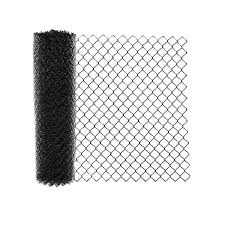Tomato Cages for Indeterminate Tomato Plants A Gardener's Essential
When it comes to growing tomatoes, especially indeterminate varieties, providing adequate support is crucial for a bountiful harvest. Indeterminate tomatoes are known for their vigorous growth and continuous fruit production throughout the growing season. Unlike their determinate counterparts, which grow to a predetermined size and ripen all at once, indeterminate tomatoes require a sturdy structure to support their sprawling vines and heavy fruit. This is where tomato cages become an essential tool for any gardener.
Understanding Indeterminate Tomatoes
Indeterminate tomato plants grow upright and can reach heights of up to 10 feet or more, depending on the variety. They produce flowers and fruit continuously until frost, meaning that effective support not only helps manage the plant's growth but also protects the fruit from ground rot and promotes air circulation, reducing the risk of disease.
Why Use Tomato Cages?
Tomato cages are designed to provide structural support, allowing the plant to grow vertically rather than sprawling on the ground. Here are some key benefits of using tomato cages for indeterminate plants
1. Improved Air Flow By elevating the plants off the ground, cages facilitate better air circulation, helping to minimize moisture accumulation that can lead to fungal diseases.
2. Reduced Pest Problems When tomatoes are off the ground, they are less susceptible to ground-dwelling pests and diseases, as well as issues like blossom end rot, which can be exacerbated by excess moisture.
3. Easier Harvesting Plants grown in cages are more accessible, making it easier to harvest fruit without damaging the vines or the tomatoes themselves.
4. Maximized Space Vertical growth allows you to maximize your garden space, especially beneficial in smaller gardening setups or urban environments where space may be limited.
tomato cages for indeterminate

Choosing the Right Tomato Cage
When selecting a tomato cage for indeterminate varieties, there are several factors to consider
1. Height and Size Opt for cages that are at least 5 to 6 feet tall to accommodate the tall growth of indeterminate tomatoes. The diameter should be wide enough to allow for the plant's growth without crowding.
2. Material Tomato cages come in various materials, including metal, plastic, and wood. Metal cages, particularly those made from heavy-duty materials, tend to be more durable and provide better support than plastic versions, which can topple over under heavy loads.
3. Shape and Design While traditional circular cages are common, consider options like triangular or square cages, which may offer additional stability and support for sprawling branches.
4. Ease of Installation Ensure your chosen cage can be easily installed in the ground without damaging the roots of existing plants. Some designs allow for assembly and disassembly, making them convenient for seasonal use.
Conclusion
Using tomato cages for indeterminate tomato plants is not just about aesthetics; it's a vital aspect of ensuring a successful harvest. By providing stability and support, gardeners can promote healthier plants that yield delicious, ripe tomatoes throughout the growing season. Investing in the right cages will not only make your gardening efforts easier but also enhance the overall health and productivity of your tomato plants. Happy gardening!
















